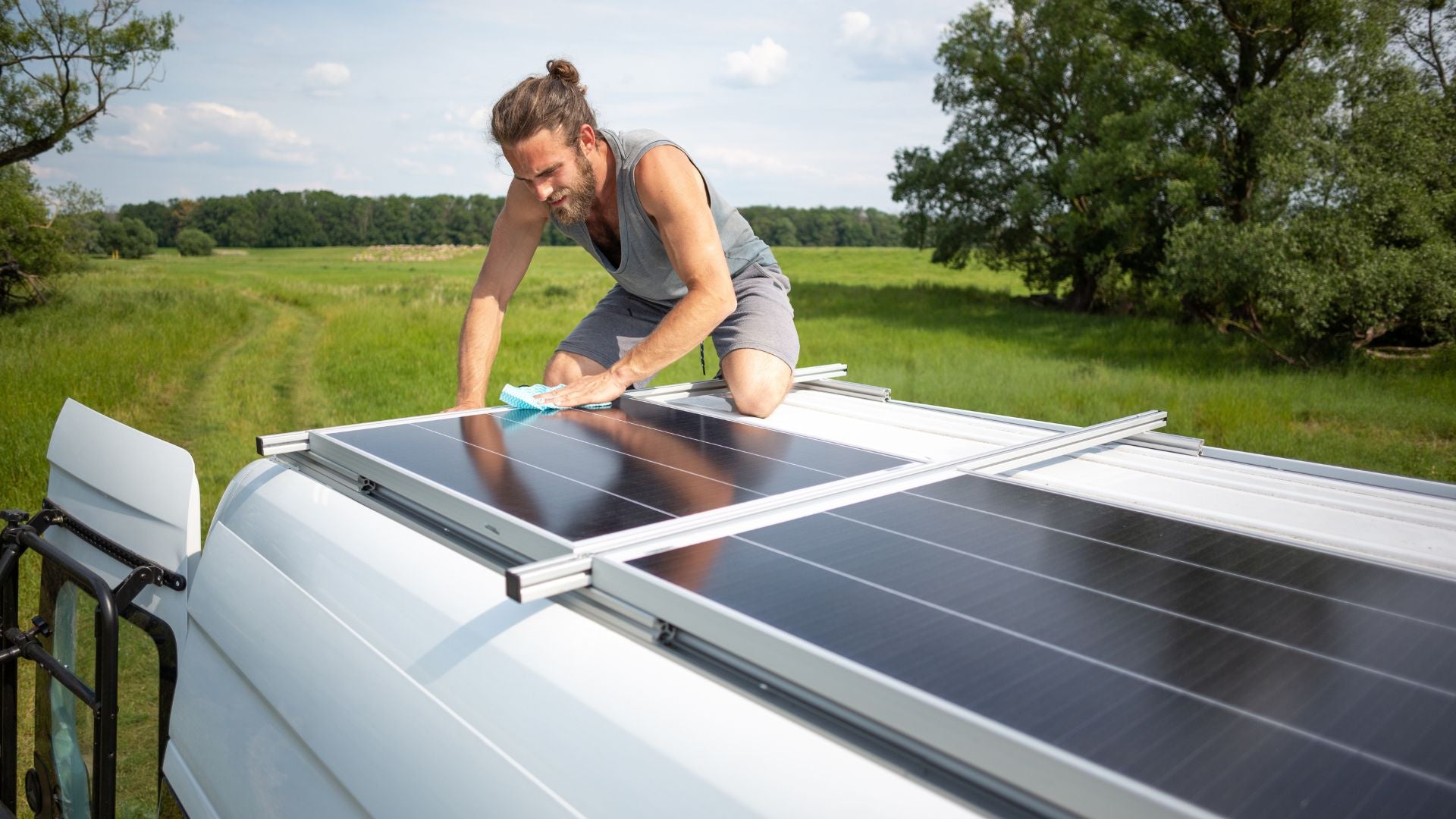Even if you ditch traditional living and rely on your city’s utilities, you must find a power source to live well. Following these five tips for choosing the right solar panel for your van will help you decipher what you should look for to live your best life.
Run a Power Audit
A power audit alerts you how many watts you use to do your daily business. There’s no need to equip your van with an elaborate solar power system if you only need to charge devices and turn on a light. However, it becomes trickier if you are cooking and cleaning inside your van.
Battery life—or amp hours—is another factor to consider. If you don’t have a battery bank to store the energy your solar panels produce, it doesn’t matter how many watts your solar arrangement produces.
Choose What’s Convenient
Once you have the verdict on how much power you need, you can explore the trio of solar panels available: flexible, rigid, and portable.
Flexible solar panels are lightweight, and installing them is a pain-free process, considering that no drilling or mounting hardware is involved. However, they aren’t the most durable solar panels, as they tend to scratch, affecting the power output.
Your permanent solar panel option is rigid panels. Typically, these are mounted on boats and RVs or on a van’s handy roof rack. Rigid panels come in various sizes and prices, so they are a great option for those on a budget who enjoy busting out their toolbox.
Portable solar panels are perfect for short getaways; therefore, they are not ideal for permanent van-lifers—that is, unless you enjoy constantly setting them up.
Durability Over Budget
Regardless of the type of solar panel you decide on, they’ll either be monocrystalline or polycrystalline. As the name implies, monocrystalline consists of a single crystal of silicon. Albeit pricier, monocrystalline panels are the best for van conversions.
In contrast, polycrystalline panels have several silicon crystals that are less efficient than their counterpart. They do well in shady areas but do not come close to producing the same amount of power as monocrystalline, making them less expensive.
Understanding Wiring
You can wire your camper solar panels in two ways: parallel or series. A series configuration relies on every panel to work in unison. One hiccup in a panel will shut down the entire system. Series wiring is beneficial because it’s cost-effective since it allows you to use smaller wires.
Parallel wiring is useful because the rest pick up the slack if one solar panel is lacking. However, they require thicker wires, raising the cost involved. Nevertheless, if efficiency is your goal, parallel wiring is your go-to solution.
Use a Reliable Charger
Lastly, it helps to have something that regulates charges and monitors the batteries while safely regulating the current. A charge controller answers those questions, but which controller is best? There is a standard PWM and MPPT controller. If you want the best results despite it being costlier, MPPT is your best bet. But the budget-friendly PWM works fine if you splurged elsewhere, such as on getting monocrystalline panels.
Hopefully, learning these five tips for choosing the right solar panel for your van paints a clearer picture of the type of system you need. Whatever you settle on, Unaka Gear Company can be your source for the best solar panels for campers. Let us know what you need, and we’ll help you construct the perfect solar panel arrangement to suit your van life needs.



Share:
Top 5 Reasons To Make the Jump to Living in a Van
5 Common DIY Van Conversion Mistakes To Avoid